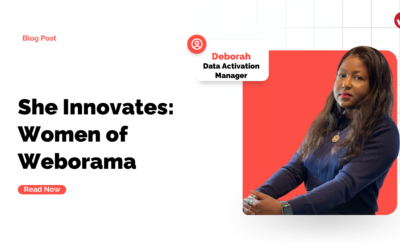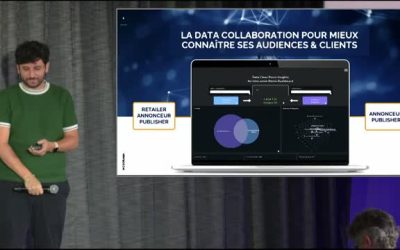Introduction and History of Data Monetization:
Data management has always been a crucial element of marketing strategy, continually evolving since the digital revolution. Historically confined to sales and direct customer interactions, data has massively proliferated with the advent of the Internet and digital technologies, providing companies with a much finer understanding of consumer behaviors.
In the digital age, data has become more accessible, diverse, and voluminous. Its abundance has given rise to the concept of “big data” and advanced marketing techniques such as personalization and targeting.
The explosion of data management in marketing has led various stakeholders to a general awareness concerning consumer privacy and regulations such as GDPR in Europe. These regulations have established new rules on collecting, processing, and sharing personal data, compelling companies to adopt more transparent and secure practices.
Furthermore, the gradual phase-out of third-party cookies, driven by increasing demands for user privacy protection, represents a significant turning point in the digital advertising industry. In response to this major transformation, the industry is exploring alternative methods such as Data Clean Rooms, which enable privacy-respecting data monetization. These secure solutions facilitate controlled data sharing without compromising privacy, thereby adapting digital marketing to a future without third-party cookies. This shift highlights the importance of innovation in adhering to privacy standards, paving the way for more ethical and user-centric marketing strategies.
In this context, the end of third-party cookies resembles a true revolution, compelling companies to rethink their targeting and personalization strategies. This evolution towards a cookieless environment encourages digital advertising actors to turn to privacy-respecting solutions like Data Clean Rooms for more secure and compliant data management.
To meet this challenge, companies have begun to adopt more privacy-respecting approaches in data management. Specifically, anonymization techniques are being used to process data in a way that respects individuals’ privacy while leveraging the insights they offer.
Definition of Data Clean Room:
A Data Clean Room is a solution that enables advertising and marketing professionals to maintain a personalized and effective approach to data management while adhering to new privacy standards. It allows advertisers to work on valuable insights from accessible data while respecting user data protection requirements.
Organization of the Data Clean Room:
At the center of the modern digital ecosystem, the Data Clean Room serves as a strategic pivot for data management. This platform becomes the repository for all your first-party data—whether it’s information from your website navigation, CRM, engagement data, or loyalty cards. In essence, everything that makes up your data assets can be integrated into the Data Clean Room.
Within this infrastructure, a key process unfolds: the intersection of your data with that of other entities, publishers, ad networks, or other advertisers. This association, or matching, transforms the data into a centralized unique resource, paving the way for a multitude of applications. Whether for monetization, enriching customer knowledge, or improving your CRM through external insights, the Data Clean Room facilitates a tailored approach strategically aligned with your objectives. Data matching occurs while adhering to the Golden Rules, meaning it should never allow IIPs (Individually Identifiable Pieces of information) such as identifiers, email addresses, or any other IIP-related information to leave the environment or be shared outside the data clean room.
The matching process is defined in close collaboration with partners to establish terms that maximize the utility and efficiency of this data integration. This framework is not just technical but also secure and legal, ensuring all data is handled transparently and the identities of the parties remain protected in accordance with privacy and GDPR standards.
Weborama enables this approach by developing a comprehensive legal framework that clearly distinguishes the “data owner” (who shares their data) from the “data provider” (who receives the data), thereby simplifying data collaboration. This initiative underscores the importance of securing data exchanges while facilitating collaboration in full compliance with current regulations, serving innovative and responsible data management.
Case Study: Advertisers, Monetize Your Data with Other Partners, Securely and Controlled
A major player in retail took the opportunity to monetize its data to advertisers using a DCR. This initiative created a dedicated space for monetizing and receiving transactional data, offering partner entities the ability to interact with this data in a secure environment.
Advertisers benefit from two main options:
Controlled self-service access: This option provides advertisers with autonomous access to non-identified data, allowing them to build targeted audiences. Before any action, the retailer verifies and validates this data, ensuring compliant and secure use.
Intersection of proprietary data: Advertisers also have the option to import their own data into the DCR to analyze and work on the intersection between their data and that of the retailer. This method enhances the relevance and effectiveness of advertising campaigns by crossing complementary data sets.
The result is a winning model for the retail player, benefiting from a DCR specialized in retail media. This configuration allows for maintaining total control over the use of its data while opening the door to innovative and privacy-respecting monetization opportunities.
This example highlights the importance of innovation in data management for modern marketing, demonstrating how DCR technologies can transform advertising strategies while adhering to principles of security and confidentiality.
The lexical field around the Data Clean Room to better understand this vast universe:
The Data Clean Room is a technology that allows working with sensitive data without compromising its security or confidentiality.
In a Data Clean Room, data is collected from users by publishers and stored in a secure area called the “clean data room.” Advertisers can then access this data to perform analyses and create audience segments, but they cannot see users’ personal data.
The Data Clean Room thus ensures the security and confidentiality of data while enabling precise and useful analyses.
Data Collaboration is a practice of sharing data between different organizations or companies to leverage each other’s expertise and resources.
Data Collaboration offers numerous advantages, such as reducing costs related to data collection and analysis; improving data quality through the combination of different sources; discovering new perspectives and opportunities with cross-expertise; creating new products and services from combined data.
CRM stands for Customer Relationship Management, a solution dedicated to managing customer relationships and ensuring a quality customer experience.
The ID Graph is a representation of a user’s or consumer’s online identities, bringing together data from different sources to create a unified view of their digital profile.
The ID Graph is used in the field of online marketing and advertising to target personalized ads and content based on user interests and behaviors. It uses tracking and data collection technologies to identify users across different devices and platforms, creating a comprehensive profile of their online activities. The ID Graph is typically built from multiple data sources, such as web browsing, online shopping activities, location, app behaviors, social media, etc.
The Data Lake allows storing large quantities of raw and unstructured data from different sources without requiring upfront organization or transformation.
Unlike a traditional database, which imposes a rigid structure on stored data, a Data Lake stores data in its raw format, allowing users to analyze and interpret it flexibly and customarily.
Weborama, The Data Intelligence Platform, brings together major technologies of digital advertising within a single architecture, with great ease of use. On one hand, user interfaces that offer easy and quick realization of use cases (Cleanroom, Datalake, Insights, Marketing Automation, Customer Knowledge, and Measurement). On the other hand, advanced engineering and data science features that efficiently achieve more ambitious goals, notably through a Data Lake shared by all modules, opening unlimited possibilities for expert data teams.



